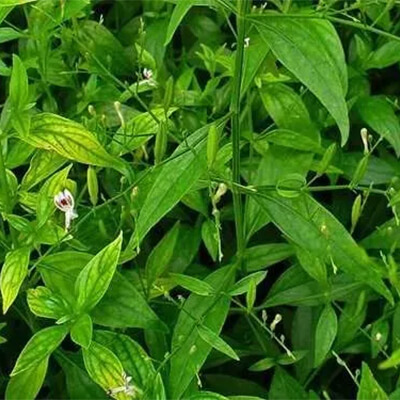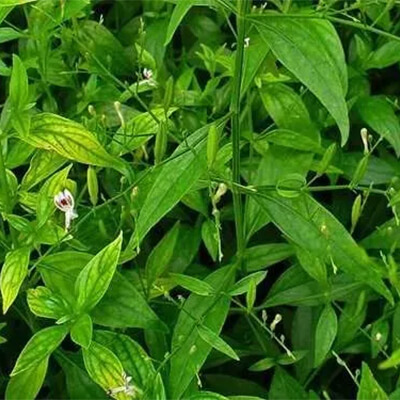On This Page
Summarise this article using AI
Kalamegha: The king of bitter
Introduction
Kalamegha or Bhunimba botanically known as Andrographis paniculata is a small annual herbaceous plant. Kalamegha means dark cloud or Bhunimb means Neem of the ground, as the bitter taste of the small annual herb Kalamegha, is similar to the bitter taste of a large Neem tree. Kalamegha is native to India and Sri Lanka but widely cultivated in southeast Asia, and South Asia to treat various disorders, especially infection. In Malaysia, Kalamegha is used to treat hypertension and diabetes. In India and China, Kalamegha is traditionally used to treat fever, cold, laryngitis, and various infectious diseases. In Classical Ayurvedic texts, Kalamegha is Tikta (bitter), in taste with hot potency, and Katu Vipaka acts as Kapha Pitta Shamaka. It is used to treat Jwara, Agnimandya, Yakrit Vikara, Kustha, etc. Recent research proved that Kalamegha contains two crystalline form alkaloids including Kalmeghin, lactone, andrographolide, andrographide, tannin, and volatile oil in little quantities. The ash obtained from the plant had sodium chloride and potassium salts. Due to these active ingredients, Kalamegha exhibits multiple pharmacological properties like hypotensive activity, anticancer activity, anti-tumor activity, hypoglycemic activity, anti-inflammatory, antipyretic, hepato- protective, antithrombotic activity, etc.
Basonym of Kalamegha
भनिम्ब- भुवि निम्ब निम्ब सदृश तिक्त त्वात एवं सगुण त्वात |
Kalamegha is considered a small variety of Nimba as it has got similar properties.
Synonyms of Kalamegha
- According to properties and action
महा तिक्त: The whole plant is very bitter to taste.
यव तिक्त: The seeds are barley shaped which is also very bitter.
Regional names of Kalamegha
- Andrographis, Kiryat, The Creat (English)
- Kalamegh, Kalmeg, Kiryat (Hindi)
- Nelabevu (Kannada)
- Nila Vepu (Malayalam)
- Palikirain, Olenkirayat (Marathi)
- Lili Kariyatu (Gujrati)
Botanical Name
Andrographis paniculata Nees. (Burm. B.)
Andrographis denoting male, paniculate means having inflorescence known as panicle.
Family
Acanthaceae (Vasa Kula)
Ayurveda Reference for Kalamegha (Andrographis paniculata)
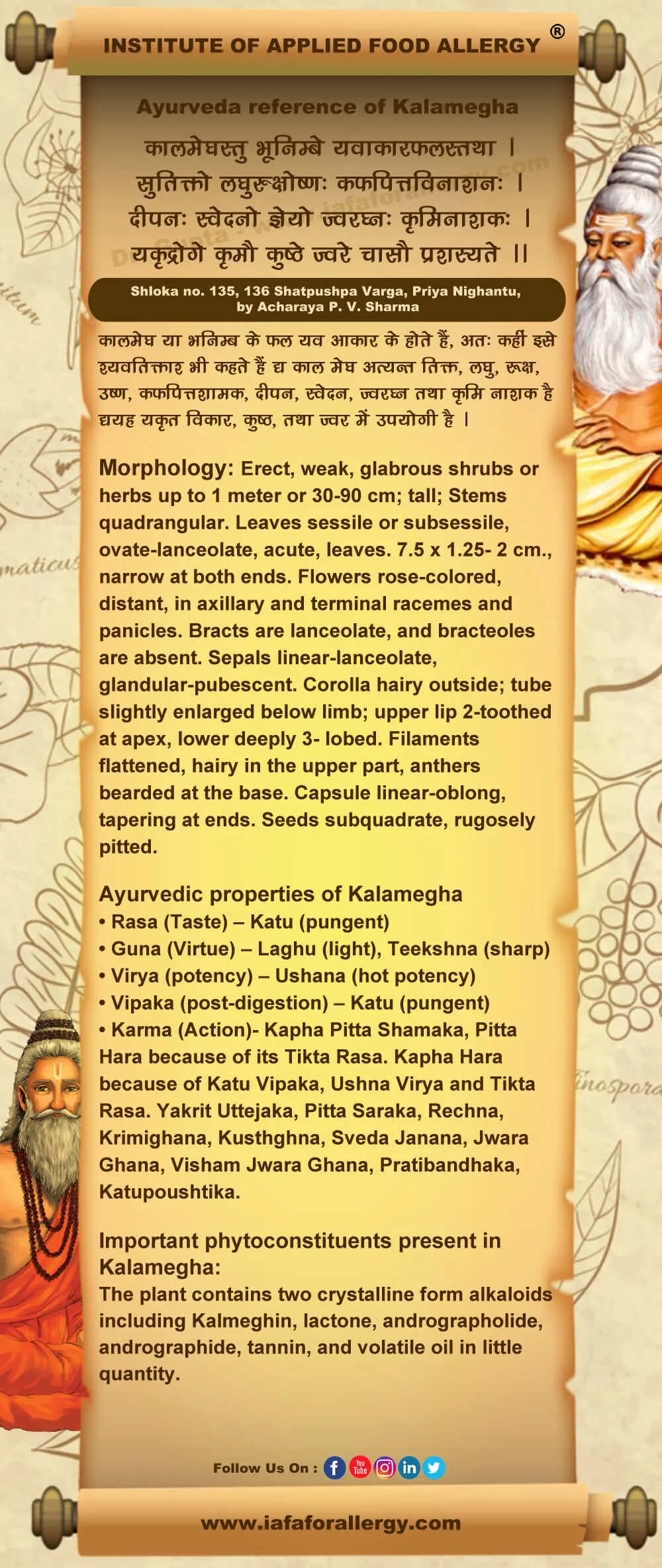
Scientific classification of the Kalamegha
| Kingdom | Plantae |
| Class | Dicotyledons |
| Subclass | Gamopetalae |
| Series | Bicarpellate |
| Order | Perstenales |
| Family | Acanthaceae |
| Genus | Andrographis |
| Species | paniculata |
Classification of Kalamegha as per Charaka and Sushruta
- Charaka: Not mentioned in Mahakshaya
- Sushruta: Not mentioned in Gana
Kalamegha’s description in Brihtrayi as Bhunimba
It has been noted that Andrographis paniculata is popularly known as Bhunimba in M. P. and Nagpur area and as Chirayata in the Bihar forests. Kalamegha is another common name given to this plant. It indicates its use in place of Kiratatikta for a long time. Its use in liver complaints is also well known. It has also been identified with Yavatikta of the texts. Do all these facts hint at the possibility of Andrographis being Bhunimba of the texts with Yavatikta as its synonym? If so, it will cease to be a synonym of Kiratatikta and be treated as an independent drug with Bhunimba as its original name.
Charaka Samhita: C. S. Chi. 7/ 69, C. S. Chi. 10/ 20, 73, C. S. Chi. 12/ 41, C. S. Chi. 15/ 132, 126, 181, C. S. Chi. 16/ 48, C. S. Si. 3/ 59, C. S. Si. 4/ 19, C. S. Si. 8/ 7
Sushruta Samhita: S. S. Chi. 9/ 8, 37, S. S. Chi. 37/ 30, S. S. Chi. 38/ 67, S. S. U. 39/ 223, S. S. U. 40/ 61, 62, 63, S. S. U. 61/ 35.
Vagbhata: A. H. SU. 10/ 28, A. H. Su. 15/ 17, A. H. Chi. 1/ 46, 53, A. H. Chi. 2/ 18, A. H. Chi. 8/ 160, A. H. Chi. 9/ 55, A. H. Chi. 10/ 37, 56, A. H. Chi. 12/ 26, A. H. Chi. 16/ 13, A. H. Chi. 17/ 39, A. H. Chi. 19/ 4, 33, A. H. U. 2/14, A. H. U. 7/ 22, A. H. U. 13/ 8
Kalamegha’s description in Brihtrayi as Yavatikta (controversy)
At present, Yavatikta is considered to be what is known as Kalamegha (Andrographis paniculata). It has been mentioned to be a synonym of Sankhini in C. S. Ka. 11. 2, but in S. S. Su. 45. 124- 125 the oils of Sankhini and Yavatikta have been described separately as different substances. Dalhana in his comments on Yavatikta states that it is a plant growing in the barley fields and has seven or eight leaves. He might likely have referred to another plant, Canscora decussata. This is slightly bitter in taste, laxative and wrongly considered by many as Sankhini or Sankhapuspi due to its reported property of being a nervine tonic. It is, therefore, felt that this might have been the original Yavatikta but later on Andrographis was accepted as another alternative source of Yavatikta and none of these two are either Sankhini or Sankhapuspi. Thus, Canscora may be accepted as Yavatikta and Andrographis as Bhumimba.
Charaka Samhita: C. S. Ka. 11/ 2
Sushruta Samhita: S. S. SU. 45/ 125
Kalamegha’s description in Brihtrayi as Kirata, Kirata Tikta (Controversy)
In reality Kirata Tikata is Swertia chirata. The substitute of this by other species of Swertia and by Andrographis paniculata is generally practiced to such an extent that they are being passed on in the drug market under the names of Chiryata and Bhunimba.
Charaka Samhita: C. S. Su. 4/ 18, 29, C. S. Vi. 7/ 22, C. S. Vi. 8/ 150, C. S. Chi. 3/ 198, 201, 211, 342, C. S. Chi. 4/ 37, 44, 73, C. S. Chi. 6/ 40, 215, C. S. Chi. 7/ 140, 145, C. S. Chi. 8/ 107, C. S. Chi. 14/ 186, 196, C. S. Chi. 15/ 127, 137, C. S. Chi. 19/ 54, 59, C. S. Chi. 21/ 54, C. S. Chi. 30/ 259, 264
Sushruta Samhita: S. S. Su. 38/ 5, S. S. Su. 45/ 120, S. S. Su. 46/ 262, 270, S. S. Chi. 9/ 9, S. S. Chi. 31/ 5, S. S. U. 11/ 15, S. S. U. 39/ 197/ 242, S. S. U. 44/ 25.
Vagbhata: A. H. Chi. 1/ 50, A. H. Chi. 8/ 102, A. H. Chi. 9/ 62, A. H. Chi. 10/ 44, A. H. Chi. 19/ 9, A. H. U. 22/ 18
Kalamegha’s description in Brihtrayi as Sankhini (Controversy)
The purgative (Bhedaniya) action (C. S. Su. 4/ 4) given so much emphasis combined with its property of a nervine tonic (Medhya) in the literature does not permit Canscora or Andrographis to be accepted as Sankhini. Dalhana and Chakra in their comments have mentioned Svetabunha which is Colonyction muricatum G. Don. ( Koudena). Its seeds are used as an adulterant of Kaladana- (Ipomoea hederacea Linn.). It is also to be noted that the reasons which have tempted an important section of the South Indian Vaidyas to accept Clitoria as Sankhapuspi may also be used to label it as Sankhini. This may also be named Sirisa Bija with seeds resembling those of Sirisha.
Charaka Samhita: C. S. Su. 1/ 80, C. S. Su. 4/ 4, C. S. Su. 25/ 49, C. S. Vi. 8/ 144, C. S. Chi. 13/ 123, 166, C. S. Chi. 23/ 208, C. S. Chi. 26/ 12, C. S. Ka. 1/ 5, C. S. Ka. 10/ 13, C. S. Ka. (Full chapter), C. S. Ka. 12/ 32, C. S. Si. 10/ 24
Sushruta Samhita: S. S. Su. 36/ 12, S. S. Su. 38/ 29, S. S. Su. 39/ 4, 5, S. S. Su. 42/ 18, S. S. Su. 44/ 84, S. S. Su. 45/ 124, S. S. Chi. 4/ 27, S. S. Chi. 5/ 18, S. S. Chi. 10/ 12, S. S. Chi. 14/ 8, 10, S. S. Chi. 17/ 35, S. S. Chi. 19/ 68, S. S. Chi. 31/
Vagbhata: A. H. Su. 15/ 1, 45, A. H. Chi. 15/ 13, A. H. Ka. 2/ 49, A. H. U. 1/ 46, A. H. U. 3/ 53
Historical background of Kalamegha
It is an annual erect herb growing up to 1 m high and bearing white flowers with purple stripes. It is commonly seen in most parts of India, It is now very clear that Kiratatikta (S. chirata) is different from Kalamegha (A. paniculata). Bapalal and Thakurji think that Yavatikta is A. paniculata. Keeping other controversies aside, one should realize the importance of Andrographis as a potent hepatoprotective and antifebrile agent.
Controversial Studies regarding Kalamegha
The identity of Kalamegha and Kiratatikta has always been Controversial always. The problem is because of the common two plants i.e., ‘Bhunimba’. It is now clearly identified that the former is Andrographis paniculata and the latter is S. chirata respectively. Sivadatta kosha described Kirata tikta as a plant whose leaves are similar to Bhringaraja and possess golden yellow flowers. It is commonly found in mountain areas (Himalayas). It is used traditionally in the management of fever and wounds.
External morphology of Kalamegha (Andrographis paniculata)
- Habit- Erect, wild, annual, subshrub.
- Stem- Branched, herbaceous, cylindrical, solid, green, branchlets 4-gonous.
- Leaves- Simple, opposite, decussate, linear-obovate, ex-stipulate, delicate, subsessile, unicostate reticulate venation, leaf apex is acute.
- Inflorescence- Panicle inflorescence, Panicle branches are zigzag.
- Flowers- Complete, bisexual, zygomorphic, white & lower mid lobes are crested with purple lines and give a pink tinge, petals are 5, stamens are 2 in number and exerted. The gynoecium is bicarpellary syncarpous, superior ovary, and axile placentation.
- Fruit- Capsule, basally beaked, oblong, compressed, minutely hairy the funicle of seeds forms a hook-like projection
Flowering and fruiting time
Autumn to the spring season. October to February.
Substitute of Jatiphala
Kalamegha is the substitute for Kiratikta (Chiryata).
External morphology of Kiratatikta
- Habit: Kiratatikta is a perennial herb, with a robust stem. The stem is 2- 4 feet long and has many branches, terete except near the top.
- Leaves: Leaves of Kiratatikta are simple, opposite, broadly lanceolate, 10cm long, and 4cm wide acute apex.
- Inflorescence: Terminal panicle inflorescence.
- Flower: Greenish yellow with a purple tinge, two glands on each lobe, fringed with long hairs.
- Fruit- Capsule, ovoid, and oblong, 2 – valved with many seeds.
- Seeds: Seeds are minute, compressed, and often winged.
- Flowering and fruiting time: The plant is flowering and fruiting in September- November or autumn season.
Distribution of Kalamegha
Kalamegha is found throughout India, in a wild or cultivated state, especially in West Bengal. The plant is abundantly scattered in rural areas. Generally, it is found in gardens and waste places. Central India, Kerala, Assam, Andhra Pradesh, Bihar, and West Bengal are other provinces in India.
The useful part of Kalamegha
Whole plant
The dry, whole plant of grayish green color consisting of straight quadrangular stems, which are up to 5 mm thick, lanceolate, leaves, up to 8 cm long and 1 to 2.5 cm broad, small flowers or linear-oblong and flattened capsules, 1.5 to 2.5 cm long, borne on the terminal and axillary panicles. The roots are fibrous and divaricately branched. It has no characteristic dour and tastes very bitter.
Important phytoconstituent of Kalamegha
The plant contains two crystalline form alkaloids including Kalmeghin, lactone, andrographolide, andrographide, tannin, and volatile oil in little quantity.
Recent research on Andrographis paniculata
- Enmozhi SK, Raja K, Sebastine I, Joseph J. Andrographolide as a potential inhibitor of SARS- CoV- 2 main protease: an in-silico approach. J Biomol Struct Dyn. 2021 Jun; 39 (9): 3092- 3098. doi: 10. 1080/ 07391102. 2020. 1760136. Epub 2020 May 5. PMID: 32329419; PMCID: PMC7212536. SARS- CoV- 2 viruses which caused the global pandemic the Coronavirus Disease- 2019 (COVID-2019) has infected about 1,203,959 patients and brought forth a death rate of about 64,788 among 206 countries as mentioned by WHO in April 2020. Clinical trials are underway for Remdesivir, an investigational antiviral drug from Gilead Sciences. Antimalarial drugs such as Chloroquine and Hydroxychloroquine derivatives are being used in emergency cases; however, they are not suitable for patients with conditions like diabetes, hypertension, and cardiac issues. The lack of availability of approved treatment for this disease calls forth the scientific community to find novel compounds with the ability to treat it. This paper evaluates the compound Andrographolide from Andrographis paniculata as a potential inhibitor of the main protease of SARS-COV-2 (Mpro) through in silico studies such as molecular docking, target analysis, toxicity prediction, and ADME prediction. Andrographolide was docked successfully in the binding site of SARS- CoV- 2 Mpro. Computational approaches also predict this molecule to have good solubility, pharmacodynamic properties, and target accuracy. This molecule also obeys Lipinski’s rule, which makes it a promising compound to pursue further biochemical and cell-based assays to explore its potential for use against COVID-19.
- The current investigation aimed to determine the hepato- protective role of silver nanoparticles (AgNPs) synthesized rapidly using Andrographis paniculata. A low dose (25 mg/ kg BW) was effective in the revival of all biological parameters to near normal in all intoxicated groups indicating the curing effects on CCl4-induced liver injury. Suriyakalaa U, Antony JJ, Suganya S, Siva D, Sukirtha R, Kamalakkannan S, Pichiah PB, Achiraman S. Hepatocurative activity of biosynthesized silver nanoparticles fabricated using Andrographis paniculata. Colloids Surf B Biointerfaces. 2013 Feb 1: 102: 189- 94, doi 10. 1016/ j. colsufb. 2012. 06. 039. Epub 2012 Aug 14.
- The present work aimed to analyze the anti-diabetic potential of chloroform fraction of ethanol extract of Andrographis paniculata (AP) and diabetes-laden gene expression alteration. Antidiabetic screening fraction of AP at the molecular level revealed significant anti-diabetic activity. Chaurasia A, Kharya MD, Sharma B, Roy P. Glucose metabolism and diabetogenic gene expression analysis of chloroform fraction of Andrographis paniculata (Nees) whole herb in diabetic albino mice. J. Complement Integr Med. 2012 Aug 10; 9: Article 21. doi: 10. 1515/ 1553- 3840. 1632.
- This study was designed to evaluate and compare the inhibitory property of extracts of Andrographis paniculata leaves [Methanolic (AP1), hydroalcoholic (AP2), Successive water (AP3)] and non-leaves [Methanolic (AP4), hydroalcoholic (AP5), successive water (AP6)] towards inflammatory mediators. Results revealed that AP1 and AP4 exhibited an inhibitory effect on all the inflammatory mediators excluding PGE2 and TNF-alpha. Chandrasekara CV, Murali B, Deepak M, Agarwal A. In vitro comparative evaluation of non-leaves and leaves extracts of Andrographis paniculata on modulation of inflammatory mediators. Anti-inflammatory, Anti Allergy Agents Med Chem. 2012 Sep; 11 (2): 191- 7.
- Andrographolide, a diterpene lactone of the Andrographis paniculata, displays anti-HIV activity invitro. A series of andrographolide derivatives have been synthesized and evaluated for their anti-HIV activity in a cell-free virus infectivity assay using TZM-bl cells. The results suggest that andrographolide derivatives may be promising candidates for the prevention of HIV infection. Uttekar MM, Das T, Pawar RS, Bhandari B, Menon V, Nutan, Gupta SK, Bhat SV. The anti-HIV activity of semi-synthetic derivatives of andrographolide and computational study of HIV-1 gp 120 protein binding. Eur J. Med Chem. 2012 Oct; 56: 368- 74. doi: 10. 1016/ j. ejmech. 2012. 07. 030. Epub 2012 Jul 24.
- It is used as a curative or preventive in snake venom poisoning (I.M. J. 1963, 57, 307).
- Kalmegh increased biliary flow and liver weight in rats and decreased hexobarbital-induced sleeping time. It was less potent than phenobarbital (Ind. J. Exp. Biol. 1978, 6, 830).
- Apigenin-7.4-di-o-methyl ether produced significant dose-dependent antiulcer activity in shay rats, histamine-induced ulcers in guinea pigs, and in aspirin-induced ulcers in rats (Ind. J. Pharm. Sci. 1981, 43, 159).
- Pretreatment with a single dose of Kalamegh leaf (500 mg/kg, p.o.) or andrographolide (5 ml/kg, p.o.) prevented CCl4, and induced an increase of GOT and SGPT but decreased liver levels of these enzymes in the dog. These changes were not observed by simultaneous treatment with either of the drugs (IRCS Med. Sci. 1984, 12, 466).
- Total root flavonoids effective against experimental myocardial ischemic necrosis induced by isoprenaline in rats and by ligation of left descending coronary artery in rabbits; decreased infarction size, and pathological changes in ST segment and Q Wave inhibited; LD50 of flavonoids in mice, 1. 15g/ kg, i.v. Rhongcaoya 0. 1987, 18, 315).
- Alcoholic extract of plants exhibited antidiarrheal activity stains E. Coli enterotoxins in animal models (int. J. Crude Drug Res. 1990, 28, 273).
- Leaf extract showed significant cytotoxicity against KB and P388 cells (J. Sci. Res. Thailand 1992, 18, 187).
- Andrographolide exhibited stronger choleretic action when administered i.p. to rats (Phytother. Res. 1991, 5, 176).
- The hepatoprotective activity of andrographolide was studied on acute hepatitis induced in rats by a single dose of galactosamine or paracetamol (I.J.M.R 1990, 92, 284).
Rasa Panchaka of Kalamegha
| Rasa (Taste) | Tikta (bitter) |
| Guna (Virtue) | Laghu (light), Ruksha (dry) |
| Virya (potency) | Ushana (hot potency) |
| Vipaka (post-digestion) | Katu (pungent) |
Dosha Karma of Kalamegha
Kapha Pitta Shamaka, Pitta Hara because of its Tikta Rasa. Kapha Hara because of Katu Vipaka, Ushna Virya and Tikta Rasa.
Karma (Actions) of Kalamegha
Yakrit Uttejaka, Pitta Saraka, Rechna, Krimighana, Kusthghna, Sveda Janana, Jwara Ghana, Visham Jwara Ghana, Pratibandhaka, Katupoushtika.
Prayogarha Vyadhi (Therapeutic indication) of Kalamegha
Jwara, Vishma Jwara, Yakrit Vikara, Krimi Roga, Agni Mandya, Vivandha, Sotha, Rakta Vikara, Doubalya, Charma Vikara.
Aamyik Paryog (Therapeutic uses) of Kalamegha
Visamajwara (Malaria)- One part of Kalamegha (Andrographis paniculata) Churna and one part of Marica 1 gram of this Churna is given internally in the case of Visamajwara Malaria).
Madhumeha (Diabetes mellitus)- Kwatha (Decoction) prepared from the whole plant of Kalamegha (Andrographis paniculata) is given internally 60 to 100 ml for a day in the case of Madhumeha (Diabetes mellitus).
Yakrudvikara (Liver disorders)- Kwatha (Decoction) of Kalamegha (Andrographis paniculata) is given orally in case of all kinds of Yakrudvikara (Liver disorders).
Benefits of Kalamegha
- The drug Kalamegha is bitter, febrifuge, stomachic, anthelmintic, bitter tonic, and anti-histaminic. It is used in allergic conditions, abdominal diseases, anasarca, ascites, cardiac disorders, helminthic manifestation, and skin diseases.
- Kalamegha is a mainly acting drug on the liver, and it is used as a cholagogue and liver functions stimulant. It is a blood purifier and is given for ailments caused by blood impurity. The powder of the Kalamegha plant mixed with Marica Churna in malaria and chronic fever. The drug is taken in debility after recovery of fever.
- Liquid extract of Kalamegha is used in medicine. Kalamegha is a substitute for Kiratatikta on account of bitterness and it is also an adulterant of Kiratatikta.
Matra (Therapeutic administration and dosage) of Kalamegha
- Churna (powder): 1- 3 grams
- Swarasa (juice): 5- 10 ml
- Kwatha (decoction): 20 to 40 ml
- Liquid extract: 1/ 2 ml

Have A Health Issue?
Consult Online
- Dr. Sahil Gupta (B.A.M.S., M.H.A.)
Ayurvedic Allergy Specialist
CEO & Founder of IAFA®
Classical reference of Kalamegha
Priya Nighnatu Shatpushpadi Varga, 135
Synonyms
कालमेघस्तु भूनिम्बे यवाकारफलस्तथा |
Priya Nighnatu Shatpushpadi Varga, 136
Properties and action
सुतिक्तो लघुरुक्षोष्ण: कफपित्तविनाशन: |
दीपन: स्वेदनो ज्ञेयो ज्वरघ्न: कृमिनाशक: |
यकृद्रोगे कृमौ कुष्ठे ज्वरे चासौ प्रशस्यते ||
Charaka Samhita, Kalpa Sthana
शंखिनी तिक्तला चैव यवतिक्ताक्षिपीडक: |
ते गुल्मगरहद्रोगकुष्ठशोफदरादिषु ||
विकसि तीक्ष्णमरूक्षत्वाद योज्ये श्लेष्माधिकेषु तु |
नातिशुष्क॑ फल ग्राह्म॑ शंखिन्या निस्तुषीकृतम् ||
Raja Nighantu, Guduchyadi Varga, 76- 78
यवतिक्ता
यवतिक्ता महातिका दृढपादा विसर्पिणी |
नाकुली नेत्रमीला च शंखिनी पत्रतण्डुली ||
तण्डुली चाक्षपीडा च सूक्ष्मपुष्पी यशस्विनी |
माहेश्वरी तिक्तयवा यावी तिकेति षोडश ||
यवतिक्ता सतिक्ता अम्ला दीपनी रुचितत्परा |
क्रिमिकु्ठविषष्नाम दोषघ्नी रेचनी च सा ||
Kaiydeva Nighantu, Taila Varga, 326
यव तिक्ता तैलं
यव तिक्त उद्भवम तैलं किंच्चित तिक्तम रसायनं
मेधाकरं त्रिदोषघ्नं पथ्यं लेखन दीपनं ||
Kaiydeva Nighantu, Taila Varga, 333, 334
शंखिनी तैलम्
शंखिनी सम्भव तैलं तीक्ष्णं कट्वस्त्रपित्तकृत् ||
अर्श: कुष्ठ कृमि श्लेष्म शुक्रभेदो अनिलापहम् |
Dravyaguna Vigyana, Dwitiya Bhaga, page 546
कालमेघ- भूनिम्ब:
कालमेघस्तु भूनिम्बो यवाकारफलस्तथा |
सुतिक्त: लघुरूक्षोष्ण: कफपित्तविनाशन: ||
दीपन: स्वेदनो ज्ञेय: कृमिघ्नं पित्तसारकः |
यकृद्रोगे क्रिमौ कुष्ठे ज्वरे चासौ प्रशस्यते ||
Specific Formulation of Kalamegha
- Bhunimbadi Churna (C. S. Chi. 15)
- Bhunimbadi Kashayam (Gada Nigreha. 2)
- Kalamegha Churna for Kamla and Yakrita Vikara
Contraindication and side effects of Kalamegha
- Kalamegha is safe to use at a dosage of 340 mg daily for 12 months. It may result in side effects like vomiting, rash, runny nose, headache, and fatigue in a few sensitive people.
- If the patient takes Andrographis extract in a high amount it may result in lethargy.
- Avoid the use of Kalamegha during pregnancy as Kalamegha has a terminating effect which may result in abortion.
- Kalamegha also shows an anti-fertility effect, and it also lowers sperm count. Kalamegha also results in inhibiting the production of progesterone. So, it is advised to avoid the use of Kalamegha if you are trying to conceive.
Suggestive reading regarding Andrographis paniculata
- Enmozhi SK, Raja K, Sebastine I, Joseph J. Andrographolide as a potential inhibitor of SARS-CoV-2 main protease: an in-silico approach. J Biomol Struct Dyn. 2021 Jun; 39 (9): 3092- 3098. doi: 10. 1080/ 07391102. 2020. 1760136. Epub 2020 May 5. PMID: 32329419; PMCID: PMC7212536.
- Sabharwal, Sakshi & Anand, Nitika & Kaur, S & Mehta, Mehul & Singh, Saurabh. (2021). An Overview on Kalamegha (Andrographis paniculata). 8. 57- 65. 10. 21276/ apjhs. 2021. 8. 4S. 10.
- Jayakumar T, Hsieh CY, Lee JJ, Sheu JR. Experimental and Clinical Pharmacology of Andrographis paniculata and Its Major Bioactive Phytoconstituent Andrographolide. Evid Based Complement Alternat Med. 2013; 2013: 846740. doi: 10. 1155/ 2013/ 846740. Epub 2013 Mar 24. PMID: 23634174; PMCID: PMC 3619690.
- Chturvedi GN, Tomar GS, Tiwari SK, Singh KP. Clinical studies on kalamegh (Andrographis paniculata Nees) in infective hepatitis. Anc Sci Life. 1983 Apr; 2 (4): 208- 15. PMID: 22556984; PMCID: PMC 3336768.
- Okhuarobo A, Falodun JE, Erharuyi O, Imieje V, Falodun A, Langer P. Harnessing the medicinal properties of Andrographis paniculata for diseases and beyond: a review of its phytochemistry and pharmacology. Asian Pac J Trop Dis. 2014 June; 4 (3): 213– 22. doi: 10. 1016/ S2222- 1808 (14) 60509-0. PMCID: PMC 4032030.
- Mishra, Siddhartha & Sangwan, Neelam & Sangwan, Rajender. (2007). Andrographis paniculata (Kalmegh): A review. Pharmacog. Rev. 1. 283- 298.
- Ankad GM, Hiremath J, Patil RT, Pramod HJ, Hegde HV. Nutrient analysis of Kunapa Jala and Panchagavya and their evaluation on germination of Ashwagandha and Kalamegha seeds: A comparative study. J Ayurveda Integr Med. 2018 Jan- Mar; 9 (1): 13- 19. doi: 10. 1016/ j. jaim. 2017. 01. 011. Epub 2017 Nov 11. PMID: 29133027; PMCID: PMC 5884015.
- Edwards, Sarah & Rocha, Inês & Williamson, Elizabeth & Heinrich, Michael. (2015). Kalmegh. 10. 1002/ 9781118543436. ch64.
- Joseph, Sonia. (2014). Scientific aspects of the therapeutic use of Andrographis paniculata (Kalmegh): A review. International Journal of Pharmaceutical Sciences Review and Research. 27. 10- 16.
- Niranjan, Abhishek & Tewari, Shri & Lehri, Alok. (2010). Biological activities of Kalmegh (Andrographis paniculata Nees) and its active principles-A review. Indian Journal of Natural Products and Resources. 1. 125-135.
- Chturvedi, G & Tomar, G & Tiwari, Shiv & Singh, K. (1983). Clinical studies on kalmegh (Andrographis paniculata Nees) in infective hepatitis. The ancient science of life. 2. 208- 15.
- M, Veera & Hegde, Prakash & Harini, A. (2016). MADHUMEHAHARA (ANTIHYPERGLYCEMIC) ACTION OF KALAMEGHA (ANDROGRAPHIS PANICULATA (BURM.F.) WAL. EX-NEES): A CLINICAL STUDY. International Journal of Research in Ayurveda & Pharmacy. 7. 107- 112. 10. 7897/ 2277- 4343. 074166.
- Kumar, Praveen & Naik, Raghavendra & Nishteswar, K. & Panara, Kalpesh & Joshi, Krutika. (2013). Experimental and Clinical Evidence of Andrographis paniculata (Roxb.) Wall. Ex Nees (Bhunimba) -A Review. IJPBA. 4. 1086- 1093.
- Patidar, Sanjay & Gontia, A & Upadhyay, A & Nayak, Preeti. (2011). Biochemical Constituents in Kalmegh (Andrographis paniculata Nees.) Under Various Row Spacing’s and Nitrogen Levels. World Applied Sciences Journal. 15.
- Hossain, Md & Rahman, K.M. & Urbi, Zannat. (2014). Andrographis paniculata (Burm. f.) Wall. ex Nees (Kalmegh) Research Update: A Medicinally Potent Herb. 10. 13140/ RG. 2. 2. 16482. 15045.
- Singh P, Srivastava MM, Khemani LD. Renoprotective effects of Andrographis paniculata (Burm. f.) Nees in rats. Ups J Med Sci. 2009; 114 (3): 136- 9. doi: 10. 1080/ 03009730903174321. PMID: 19736602; PMCID: PMC 2852765.
- Jayakumar T, Hsieh CY, Lee JJ, Sheu JR. Experimental and Clinical Pharmacology of Andrographis paniculata and Its Major Bioactive Phytoconstituent Andrographolide. Evid Based Complement Alternat Med. 2013; 2013: 846740. doi: 10. 1155/ 2013/ 846740. Epub 2013 Mar 24. PMID: 23634174; PMCID: PMC 3619690.
- Tsubaki BR, Gawas SC, Negi H. Effect of Ayurveda Management on Liver Cirrhosis with Ascites-A Retrospective Cohort Study. J Ayurveda Integr Med. 2022 Apr- Jun; 13 (2):100508. doi: 10. 1016/ j. jaim. 2021. 07. 023. Epub 2022 Jan 5. PMID: 34996679; PMCID: PMC 8814404.
- Mishra A, Shaik HA, Sinha RK, Shah BR. Andrographolide: A Herbal-Chemosynthetic Approach for Enhancing Immunity, Combating Viral Infections, and Its Implication on Human Health. Molecules. 2021 Nov 21; 26 (22):7036. doi: 10. 3390/ molecules 26227036. PMID: 34834128; PMCID: PMC 8622020.
- Banerjee S, Kar A, Mukherjee PK, Haldar PK, Sharma N, Katiyar CK. The immunoprotective potential of Ayurvedic herb Kalmegh (Andrographis paniculata) against respiratory viral infections – LC-MS/MS and network pharmacology analysis. Phytochem Anal. 2021 Jul; 32 (4): 629- 639. doi: 10. 1002/ PCA. 3011. Epub 2020 Nov 9. PMID: 33167083.
- Hossain MS, Urbi Z, Sule A, Hafizur Rahman KM. Andrographis paniculata (Burm. f.) Wall. ex Nees: a review of ethnobotany, phytochemistry, and pharmacology. ScientificWorldJournal. 2014; 2014: 274905. doi: 10. 1155/ 2014/ 274905. Epub 2014 Dec 24. PMID: 25950015; PMCID: PMC 4408759.
- Intharuksa A, Arunotayanun W, Yooin W, Sirisa-Ard P. A Comprehensive Review of Andrographis paniculata (Burm. f.) Nees and Its Constituents as Potential Lead Compounds for COVID-19 Drug Discovery. Molecules. 2022 Jul 13; 27 (14): 4479. doi: 10. 3390/ molecules 27144479. PMID: 35889352; PMCID: PMC 9316804.
- Kumar S, Singh B, Bajpai V. Andrographis paniculata (Burm.f.) Nees: Traditional uses, phytochemistry, pharmacological properties, and quality control/quality assurance. J Ethnopharmacol. 2021 Jul 15; 275: 114054. doi: 10. 1016/ j. jep. 2021.114054. Epub 2021 Apr 6. PMID: 33831465.
- Chao WW, Kuo YH, Lin BF. Isolation and Identification of Andrographis paniculata (Chuanxinlian) and Its Biologically Active Constituents Inhibited Enterovirus 71-Induced Cell Apoptosis. Front Pharmacol. 2021 Dec 8; 12: 762285. doi: 10. 3389/ fphar. 2021. 762285. PMID: 34955832; PMCID: PMC8692857.
- Biswa, Deepak & Bharati, & Sharma, Pramod & Kumar, Nitin & Dudhe, Rupesh & Bansal, Vipin. (2011). Pharmacological Activity of Andrographis Paniculata: A Brief Review. Pharmacology Online. 2.
- Chauhan, Ekta & Sharma, Kriti & Bist, Renu. (2019). Andrographis paniculata: A Review of its Phytochemistry and Pharmacological Activities. Research Journal of Pharmacy and Technology. 12. 891. 10. 5958/ 0974-360X. 2019. 00153. 7.
- Dey, Yadu & Kumari, Suman & Sarada, Ota & Srikanth, Narayanam. (2013). Phytopharmacological review of Andrographis paniculata (Burm. F) Wall. Ex Nees. International Journal of Nutrition, Pharmacology, Neurological Diseases. Volume: 3. Page: 3- 10. 10. 4103/ 2231- 0738. 106973.
- Joshi, Krutika. (2015). Experimental and Clinical Evidence of Andrographis paniculata (Roxb.) Wall. Ex Nees (Bhunimba) – A Review.
- Dai, Yan & Chen, Shao-Ru & Chai, Ling & Zhao, J. & Wang, Yitao & Wang, Ying. (2018). Overview of Pharmacological Activities of Andrographis paniculata and its Major Compound Andrographolide. Critical Reviews in Food Science and Nutrition. 59. 1- 42. 10. 1080/ 10408398. 2018. 1501657.
- Jarukamjorn, Kanokwan & Nemoto, Nobuo. (2008). Pharmacological Aspects of Andrographis paniculata on Health and Its Major Diterpenoid Constituent Andrographolide. Journal of Health Science – J HEALTH SCI. 54. 370- 381. 10. 1248/ jhs. 54. 370.
- Nyeem, Mohammad & Mannan, Md & Nuruzzaman, Mohammad & Kamrujjaman, KM & Das, Samir. (2017). Indigenous king of bitter (Andrographis paniculata): A review. 318. 318- 324.
- Biswas, Surjyo. (2014). Andrographis paniculata a traditional herb with pharmacological properties: A review Global Journal of Research on Medicinal plants & Indigenous medicine.
- N Kumar, Rita & Chakraborty, Sudeshna & J. I., Nirmal. (2010). Andrographis paniculata – An important Medicinal herb.
- Naomi R, Bahari H, Ong ZY, Keong YY, Embong H, Rajandram R, Teoh SH, Othman F, Hasham R, Yin KB, Kaniappan P, Yazid MD, Zakaria ZA. Mechanisms of Natural Extracts of Andrographis paniculata That Target Lipid-Dependent Cancer Pathways: A View from the Signaling Pathway. Int J Mol Sci. 2022 May 26; 23 (11): 5972. doi: 10. 3390/ ijms23115972. PMID: 35682652; PMCID: PMC 9181071.
- Rajanna M, Bharathi B, Shivakumar BR, Deepak M, Prashanth D, Prabakaran D, Vijayabhaskar T, Arun B. Immunomodulatory effects of Andrographis paniculata extract in healthy adults – An open-label study. J Ayurveda Integr Med. 2021 Jul- Sep; 12 (3): 529- 534. doi: 10. 1016/ j. jaim. 2021. 06. 004. Epub 2021 Aug 8. PMID: 34376353; PMCID: PMC8377179.
- Sa-Ngiamsuntorn K, Suksatu A, Pewkliang Y, Thongsri P, Kanjanasirirat P, Manopwisedjaroen S, Charoensutthivarakul S, Wongtrakoongate P, Pitiporn S, Chaopreecha J, Kongsomros S, Jearawuttanakul K, Wannalo W, Khemawoot P, Chutipongtanate S, Borwornpinyo S, Thitithanyanont A, Hongeng S. Anti- SARS- CoV- 2 Activity of Andrographis paniculata Extract and Its Major Component Andrographolide in Human Lung Epithelial Cells and Cytotoxicity Evaluation in Major Organ Cell Representatives. J Nat Prod. 2021 Apr 23; 84 (4): 1261- 1270. doi: 10. 1021/ acs. jnatprod. 0c01324. Epub 2021 Apr 12. PMID: 33844528; PMCID: PMC 8056600.
- Thamlikitkul V, Dechatiwongse T, Theerapong S, Chantrakul C, Boonroj P, Punkrut W, Ekpalakorn W, Boontaeng N, Taechaiya S, Petcharoen S, et al. Efficacy of Andrographis paniculata, Nees for pharyngotonsillitis in adults. J Med Assoc Thai. 1991 Oct; 74 (10): 437- 42. PMID: 1797953.
References
- Agnivesha, Charaka, Dridhabala. In: Charaka Samhita, ed. Vaidya Jadavaji Trikamji Aacharya., editor. Varanasi: Chaukhamba Sanskrit Sansthan; 2009.
- Sushruta. In: Sushruta Samhita, Sutra Sthana, ed. Vaidya Jadavji Trikamji Acharya., editor. Varanasi: Choukhambha Orientalia; 2005.
- Vagbhata. In: Ashtanga Hrudaya, 9th ed. Anna Moreshwar Kunte, Krishnashastri Navarre, Harishastri, editors. Varanasi: Choukhambha Orientalia; 2005.
- Bhavprakasha, commentary by Bulusu Sitaram, forwarded by K.C.Chunekar
- Sharma PV, Kaideva Nighantu. Taila Varga. Chaukhamba Orientalia, Varanasi; 2006:
- Tripathi I., Raja Nighantu, Guduchyadi, Kshiradi Varga, Chaukhamba Krishnadas Academy; Varanasi; 2010
- Priya Nighantu by P. V. Sharma, Shatpushpadi Varga Chaukhamba Krishnadas Academy; Varanasi.
- Dr. Gyanendra Pandey, Dravyaguna Vigyana, reprint 2012, Chaukhamba Krishnadas Academy
- K. Niteshwar Dravyaguna Vigyan, reprint 2017.
- Dr. J.L.N. Sastry and Dr. B.S. Sastry, Dravyaguna Vigyana, Chaukhambha Orientalia, Varanasi.
- Chakrapanidatta, Chakradatta with the vaidaya Prabha hindi commentary by indra deva tripathi, chaukambha sanskrita sansthan, Varanasi 2nd Edition, 1994.
Ayurveda is an Indian system of medicine that is popular since ancient times. Dr. Gupta’s IAFA® has been conducting research studies to find out different phytoconstituents of herbs and their action in the body. Such knowledge acquired by our experts is used in the preparation of medicines and providing the treatment facilities safely and effectively. IAFA® is the provider of safe and effective treatment for a wide range of diseases, mainly allergic diseases all based on Ayurveda.
Was this Page Helpful?
Read More Articles
-
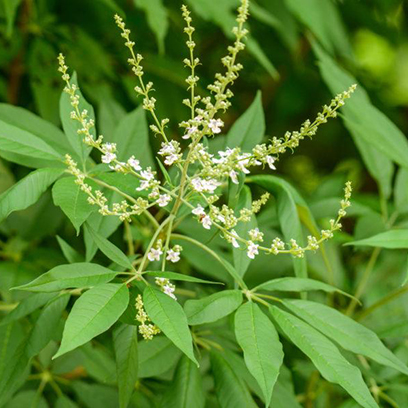
Nirgundi (Vitex negundo)
Discover the health benefits, uses, and medicinal properties of Nirgundi (Vitex negundo).…
-
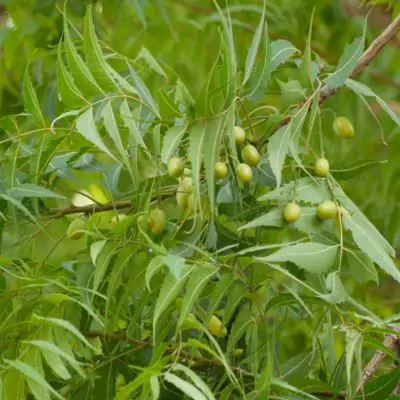
Nimba (Azadirachta indica)
Nimba (Azadirachta indica), known as Neem or Indian Lilac, offers powerful medicinal…

